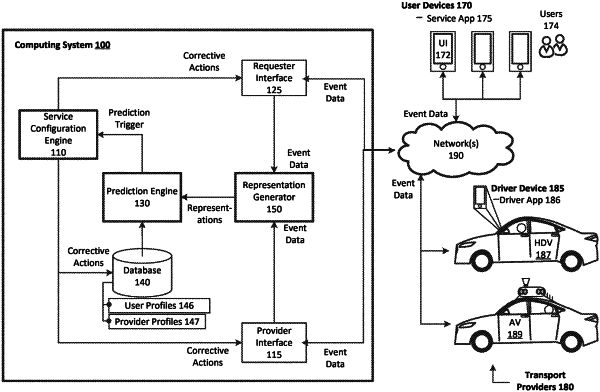| CPC G06F 16/24578 (2019.01) [G06Q 50/30 (2013.01); H04L 67/535 (2022.05); G06N 20/00 (2019.01)] | 14 Claims |

|
1. A computing system implementing a transport service, comprising:
a network communication interface to communicate, over one or more networks, with a service application executing on computing devices of requesting users of the transport service;
one or more processors; and
one or more memory resources storing instructions that, when executed by the one or more processors, cause the computing system to:
monitor, over the one or more networks, event data corresponding to a current user experience of a requesting user during a current application session with the transport service, the event data comprising at least one of location data, input data on the service application by the requesting user, or sensor data from a computing device of the requesting user;
based on the event data, generate one or more representations corresponding to the current user experience of the requesting user, the one or more representations further corresponding to historical utilization of the transport service by the requesting user;
execute an artificial intelligence model to analyze the one or more representations in order to (i) predict a negative user experience for the requesting user at a future time during the current application session, the predicted negative user experience corresponding to a prediction that the requesting user will cancel a requested ride from a matched transport provider in connection with the transport service, and (ii) determine that the matched transport provider is inducing the requesting user to cancel the requested ride; and
in response to predicting the negative user experience and determining that the matched transport provider is inducing the requesting user to cancel the requested ride, implement one or more corrective actions during the current application session through the service application to prevent or mitigate the predicted negative user experience.
|